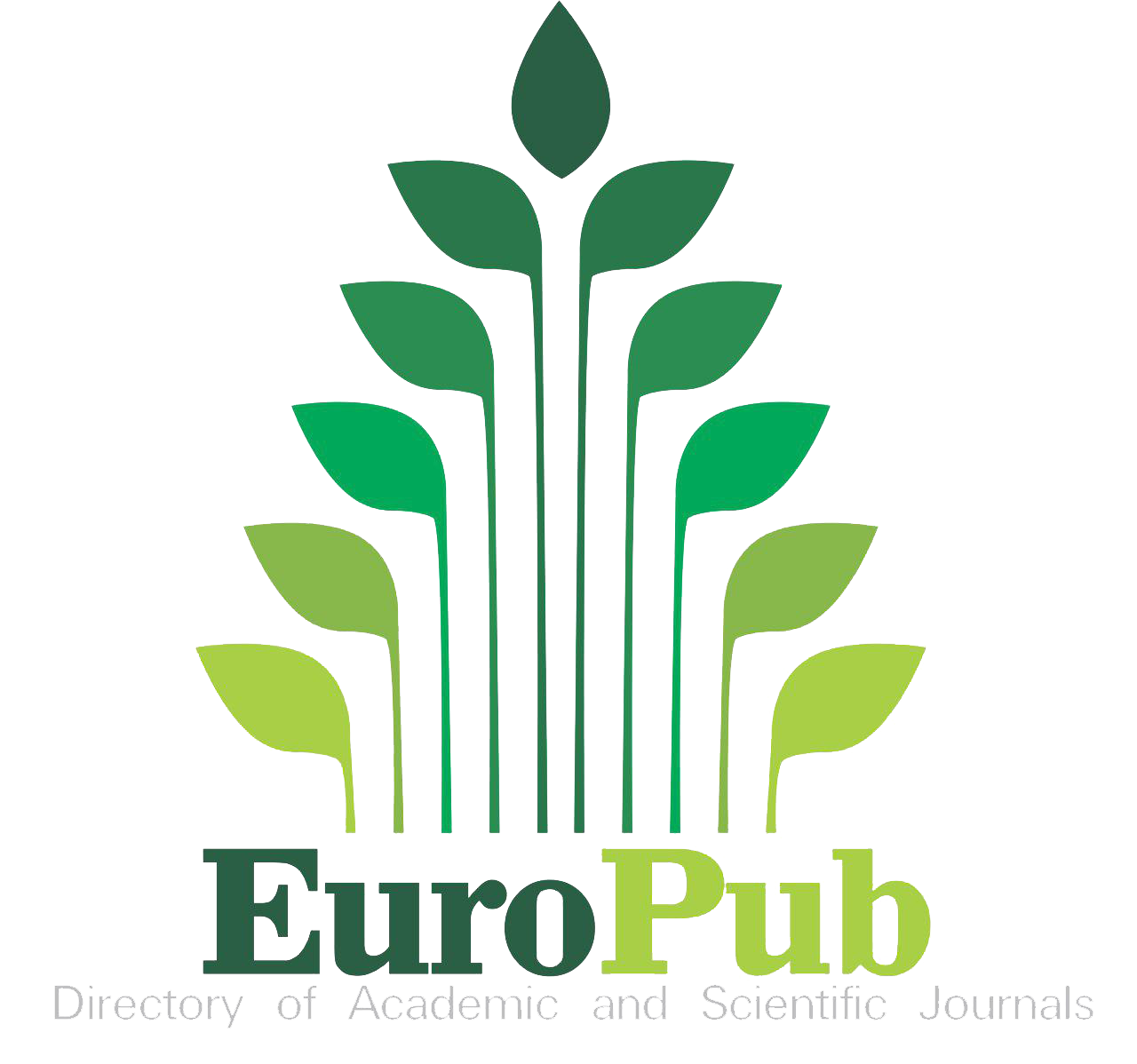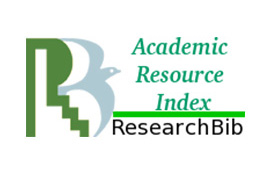Gallbladder microbiota in laboratory animals: Insights and implications
Gallbladder microbiome in laboratory animals
DOI:
https://doi.org/10.5281/zenodo.10444415Keywords:
Gallbladder microbiome, mice, rabbit, microbiotaAbstract
The aim of this review is to give novel information about the gallbladder microbiome's clinical importance and alteration of the gallbladder microbiota of specific laboratory animals in health and disease. The significant involvement of the gastrointestinal microbiota (GM) in maintaining optimal health has been widely acknowledged. Their functions include a broad spectrum of mechanisms, such as facilitating digestion, enhancing the immune system and strengthening against bacterial pathogens and pathogenic commensal microorganisms. Until now, the majority of research on bacterial function and diversity has concentrated on the colon due to its easy accessibility for sample collection and the abundant presence of bacteria in that region. Despite the widespread interest in examining how the intestinal microbiota affects health and disease, it is unexpected that there has been a inadequate number of researchs focusing on investigating the microbial structure of bile. The gallbladder microbiome, although often neglected in human medicine, is a valuable source of discovery for veterinarians. Its applicability, especially in laboratory animals and hospitalized small animal patients, shows the prospective value of investigating the gallbladder microbiome as an encouraging avenue in the scope of veterinary medicine. Research in this field reveals important insights that can enrich veterinary clinical practice and offer new perspectives on animal health.
References
Collins SM, Surette M, Bercik P. The interplay between the intestinal microbiota and the brain. Nat Rev Microbiol. 2012;10(11):735-742. doi:10.1038/nrmicro2876
Xu J, Mahowald MA, Ley RE, et al. Evolution of Symbiotic Bacteria in the Distal Human Intestine. PLOS Biol. 2007;5(7):e156. doi:10.1371/journal.pbio.0050156
de Vos WM, de Vos EAJ. Role of the intestinal microbiome in health and disease: from correlation to causation. Nutr Rev. 2012;70 Suppl 1:S45-56. doi:10.1111/j.1753-4887.2012.00505.x
Ericsson AC, Gagliardi J, Bouhan D, Spollen WG, Givan SA, Franklin CL. The influence of caging, bedding, and diet on the composition of the microbiota in different regions of the mouse gut. Sci Rep. 2018;8:4065. doi:10.1038/s41598-018-21986-7
Ericsson AC, Davis JW, Spollen W, et al. Effects of vendor and genetic background on the composition of the fecal microbiota of inbred mice. PloS One. 2015;10(2):e0116704. doi:10.1371/journal.pone.0116704
Benson AK, Kelly SA, Legge R, et al. Individuality in gut microbiota composition is a complex polygenic trait shaped by multiple environmental and host genetic factors. Proc Natl Acad Sci U S A. 2010;107(44):18933-18938. doi:10.1073/pnas.1007028107
Tomkovich S, Stough JMA, Bishop L, Schloss PD. The Initial Gut Microbiota and Response to Antibiotic Perturbation Influence Clostridioides difficile Clearance in Mice. mSphere. 2020;5(5):e00869-20. doi:10.1128/mSphere.00869-20
Ley RE, Peterson DA, Gordon JI. Ecological and Evolutionary Forces Shaping Microbial Diversity in the Human Intestine. Cell. 2006;124(4):837-848. doi:10.1016/j.cell.2006.02.017
Gookin JL, Hartley AN, Aicher KM, et al. Gallbladder microbiota in healthy dogs and dogs with mucocele formation. PLOS ONE. 2023;18(2):e0281432. doi:10.1371/journal.pone.0281432
Begley M, Gahan CGM, Hill C. The interaction between bacteria and bile. FEMS Microbiol Rev. 2005;29(4):625-651. doi:10.1016/j.femsre.2004.09.003
Capoor MR, Nair D, Rajni null, et al. Microflora of bile aspirates in patients with acute cholecystitis with or without cholelithiasis: A tropical experience. Braz J Infect Dis Off Publ Braz Soc Infect Dis. 2008;12(3):222-225. doi:10.1590/s1413-86702008000300012
Swidsinski A, Lee SP. The role of bacteria in gallstone pathogenesis. Front Biosci J Virtual Libr. 2001;6:E93-103. doi:10.2741/swidsinski
Sayin SI, Wahlström A, Felin J, et al. Gut microbiota regulates bile acid metabolism by reducing the levels of tauro-beta-muricholic acid, a naturally occurring FXR antagonist. Cell Metab. 2013;17(2):225-235. doi:10.1016/j.cmet.2013.01.003
Sekirov I, Russell SL, Antunes LCM, Finlay BB. Gut microbiota in health and disease. Physiol Rev. 2010;90(3):859-904. doi:10.1152/physrev.00045.2009
Dowd GC, Joyce SA, Hill C, Gahan CGM. Investigation of the Mechanisms by Which Listeria monocytogenes Grows in Porcine Gallbladder Bile. Infect Immun. 2011;79(1):369-379. doi:10.1128/IAI.00330-10
Gonzalez-Escobedo G, Marshall JM, Gunn JS. Chronic and acute infection of the gall bladder by Salmonella Typhi: understanding the carrier state. Nat Rev Microbiol. 2011;9(1):9-14. doi:10.1038/nrmicro2490
Hardy J, Francis KP, DeBoer M, Chu P, Gibbs K, Contag CH. Extracellular replication of Listeria monocytogenes in the murine gall bladder. Science. 2004;303(5659):851-853. doi:10.1126/science.1092712
Pereira P, Aho V, Arola J, et al. Bile microbiota in primary sclerosing cholangitis: Impact on disease progression and development of biliary dysplasia. PLOS ONE. 2017;12(8):e0182924. doi:10.1371/journal.pone.0182924
Hamoud A rizaq, Weaver L, Stec DE, Hinds TD. Bilirubin in the Liver to Gut Signaling Axis. Trends Endocrinol Metab TEM. 2018;29(3):140-150. doi:10.1016/j.tem.2018.01.002
Vítek L, Zelenka J, Zadinová M, Malina J. The impact of intestinal microflora on serum bilirubin levels. J Hepatol. 2005;42(2):238-243. doi:10.1016/j.jhep.2004.10.012
Csendes A, Burdiles P, Maluenda F, Diaz JC, Csendes P, Mitru N. Simultaneous bacteriologic assessment of bile from gallbladder and common bile duct in control subjects and patients with gallstones and common duct stones. Arch Surg Chic Ill 1960. 1996;131(4):389-394. doi:10.1001/archsurg.1996.01430160047008
Helaly GF, El-Ghazzawi EF, Kazem AH, Dowidar NL, Anwar MM, Attia NM. Detection of Helicobacter pylori infection in Egyptian patients with chronic calcular cholecystitis. Br J Biomed Sci. 2014;71(1):13-18. doi:10.1080/09674845.2014.11669957
Zhang FM, Yu CH, Chen HT, et al. Helicobacter pylori infection is associated with gallstones: Epidemiological survey in China. World J Gastroenterol WJG. 2015;21(29):8912-8919. doi:10.3748/wjg.v21.i29.8912
Sheh A, Fox JG. The role of the gastrointestinal microbiome in Helicobacter pylori pathogenesis. Gut Microbes. 2013;4(6):505-531. doi:10.4161/gmic.26205
Hazrah P, Oahn KTH, Tewari M, et al. The frequency of live bacteria in gallstones. HPB. 2004;6(1):28-32. doi:10.1080/13651820310025192
Merritt ME, Donaldson JR. Effect of bile salts on the DNA and membrane integrity of enteric bacteria. J Med Microbiol. 2009;58(12):1533-1541. doi:10.1099/jmm.0.014092-0
Salter SJ, Cox MJ, Turek EM, et al. Reagent and laboratory contamination can critically impact sequence-based microbiome analyses. BMC Biol. 2014;12(1):87. doi:10.1186/s12915-014-0087-z
Tajeddin E, Sherafat SJ, Majidi MRS, Alebouyeh M, Alizadeh AHM, Zali MR. Association of diverse bacterial communities in human bile samples with biliary tract disorders: A survey using culture and polymerase chain reaction-denaturing gradient gel electrophoresis methods. Eur J Clin Microbiol Infect Dis. 2016;35(8):1331-1339. doi:10.1007/s10096-016-2669-x
Simanenkov VI, Ильич СВ, Suvorov AN, et al. Gallbladder microbiota in patients with gallstone disease. Her North-West State Med Univ Named II Mechnikov. 2020;12(1):37-44. doi:10.17816/mechnikov202012137-44
Molinero N, Ruiz L, Milani C, et al. The human gallbladder microbiome is related to the physiological state and the biliary metabolic profile. Microbiome. 2019;7(1):100. doi:10.1186/s40168-019-0712-8
Neo S, Takemura-Uchiyama I, Uchiyama J, et al. Screening of bacterial DNA in bile sampled from healthy dogs and dogs suffering from liver- or gallbladder-associated disease. J Vet Med Sci. 2022;84(7):1019-1022. doi:10.1292/jvms.22-0090
Hansen AK, Franklin C. Microbiota, laboratory animals, and research. Lab Anim. 2019;53(3):229-231. doi:10.1177/0023677219844538
The Principles of Humane Experimental Technique. Med J Aust. 1960;1(13):500-500. doi:10.5694/j.1326-5377.1960.tb73127.x
Schaedler RW, Dubos R, Costello R. The development of the bacterial flora in the gastrointestinal tract of mice. J Exp Med. 1965;122(1):59-66.
Dewhirst FE, Chien CC, Paster BJ, et al. Phylogeny of the defined murine microbiota: altered Schaedler flora. Appl Environ Microbiol. 1999;65(8):3287-3292. doi:10.1128/AEM.65.8.3287-3292.1999
Wen L, Ley RE, Volchkov PY, et al. Innate immunity and intestinal microbiota in the development of Type 1 diabetes. Nature. 2008;455(7216):1109-1113. doi:10.1038/nature07336
Guo J, Song C, Liu Y, et al. Characteristics of gut microbiota in representative mice strains: Implications for biological research. Anim Models Exp Med. 2022;5(4):337-349. doi:10.1002/ame2.12257
Brooks SPJ, McAllister M, Sandoz M, Kalmokoff ML. Culture-independent phylogenetic analysis of the faecal flora of the rat. Can J Microbiol. 2003;49(10):589-601. doi:10.1139/w03-075
Manichanh C, Reeder J, Gibert P, et al. Reshaping the gut microbiome with bacterial transplantation and antibiotic intake. Genome Res. 2010;20(10):1411-1419. doi:10.1101/gr.107987.110
Dalby AB, Frank DN, St Amand AL, Bendele AM, Pace NR. Culture-independent analysis of indomethacin-induced alterations in the rat gastrointestinal microbiota. Appl Environ Microbiol. 2006;72(10):6707-6715. doi:10.1128/AEM.00378-06
Azard A. Caractérisation des systèmes de production cunicole français et perspectives d'évolution. Cuniculture Magazine. 2023;33:78-85. http://www.cuniculture.info/Docs/Magazine/Magazine2006/mag33-078.htm
Monteils V, Cauquil L, Combes S, Godon JJ, Gidenne T. Potential core species and satellite species in the bacterial community within the rabbit caecum. FEMS Microbiol Ecol. 2008;66(3):620-629. doi:10.1111/j.1574-6941.2008.00611.x
Xing Y, Liu J, Lu F, Wang L, Li Y, Ouyang C. Dynamic distribution of gallbladder microbiota in rabbit at different ages and health states. PLoS One. 2019;14(2):e0211828.
Downloads
Published
How to Cite
Issue
Section
License
Copyright (c) 2023 Rats

This work is licensed under a Creative Commons Attribution 4.0 International License.


















